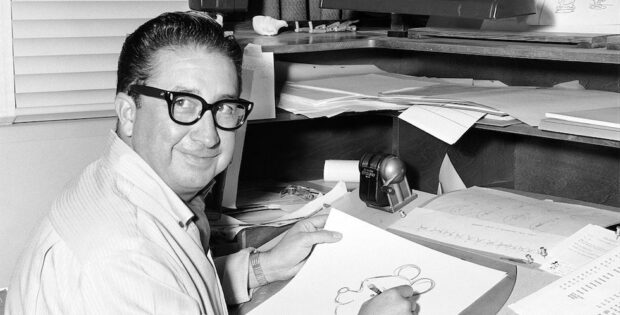The music of Phantom Manor: A haunting tune
The music of Phantom Manor is one of the most popular scores among Disneyland Paris guests and fans. As Thomas Zielinski from the Phantom Manor Legends website explains, “The fact that the creators of the attraction thought about the music early on underlines the importance of music in transmitting history and emotion to the guest.”

From Pirates to Ghosts
The theme music for Phantom Manor, first and foremost, is the famous “Grim Grinning Ghosts (The Screaming Song),” originally composed for The Haunted Mansion attraction located at Disneyland Resort in California. The lyrics are the work of X. Atencio, who wrote the lyrics to “Yo Ho! (A Pirate’s Life For Me)” a few years earlier. As an author and screenwriter, his role was to combine the attraction’s two atmospheres, namely the macabre and the humorous. Thus, from the very beginning, he presented his ghosts as both scary “Grim Grinning Ghosts” and kind as they “come out to socialize.”

A similar process can be found in the music composed by Buddy Baker (Impressions de France, The Many Adventures of Winnie the Pooh). There are dissonant intervals, creating a strange and even frightening feeling, but the composer carefully avoided the “augmented fourth,” nicknamed the “Diabolus in Musica.” This results in both a heavy and airy, light mood, typical of what Walt Disney had imagined for his attraction.

Funeral and Triumphal Symphony
Once the original script for Phantom Manor was put together, it seemed obvious to Jeff Burke, the Imagineer in charge of designing Frontierland, that Melanie Ravenswood’s tragic story needed to be told in a way that was different to the American and Japanese versions of the attraction. Given the multicultural dimension of Disneyland Paris, it was not possible to use a narrator as in the other versions. Music, therefore, had a crucial role to play, both in terms of atmosphere and narration.

A first experimentation was attempted by the illustrator and musician Christian Hope, in collaboration with musician Marco Monahan and sound engineer Paul Ricchiuti. The aim of these artists was to articulate the gothic atmosphere of this new version as much as possible. To do so, they had the idea of adapting the original music, switching from a walking rhythm to a waltz, using a synthesizer to recreate symphonic sounds. This proved to be conclusive, and it was time to consider moving on to using a real orchestra.
At the time, composer John Debney (“The Emperor’s New Groove”) was working on the music for “it’s a small world,” and it was the Imagineer in charge of Fantasyland, Tom Morris, who had the idea of introducing the composer to his colleague at Frontierland. Debney knew Baker well, so he saw this request as a form of tribute to his mentor. He turned the music of Phantom Manor into a huge “theme and variations” symphony, while keeping a feverish jazzy feeling for the Catacomb scene. It was also his idea to add Melanie’s solo voice, echoing from beyond the grave.

The orchestration by Debney and Brad Dechter (“Atlantis: The Lost Empire”), which readily borrows from Camille Saint-Saëns’ “Danse Macabre” (“Dance of Death”), features the classical orchestra and adds a few special instruments:
The bass flute is a tribute to Baker’s original score, included in the original boarding scene. The organ, recorded in church in London, creates a mystical aspect reminiscent of Johann Sebastian Bach’s famous Toccata and Fugue in D minor. The harpsichord piano, or detuned piano, is perfectly suited for the saloon scene in Phantom Canyon.
As for the Vibraslap (a percussion instrument that produces a kind of shrill sound) and Xylophone sounds, they are ideally suited for the Catacombs’ ambiance: The skeletons play music with their own bones like in “The Skeleton Dance” (1929), the first cartoon in the “Silly Symphonies” series.

The music box resounding in the garden around the gazebo is last but not least. It particularly evokes the attraction’s theme song and was also written by Debney. A manufacturer of traditional music boxes engraved the music on a metal disc – as was done in the late 19th century for mechanical instruments such as the Polyphon or the Symphonion music boxes. Imagineer Glenn Barker, sound designer, brought his own music box to the Walt Disney Imagineering studio and played the disc there to record it. The result is a sound as if it arose from the past, as authentic as it is haunting… Enough to put guests in the right mood before they even enter the manor!

